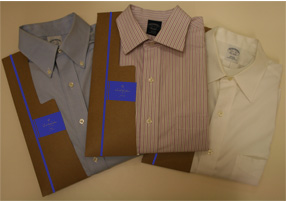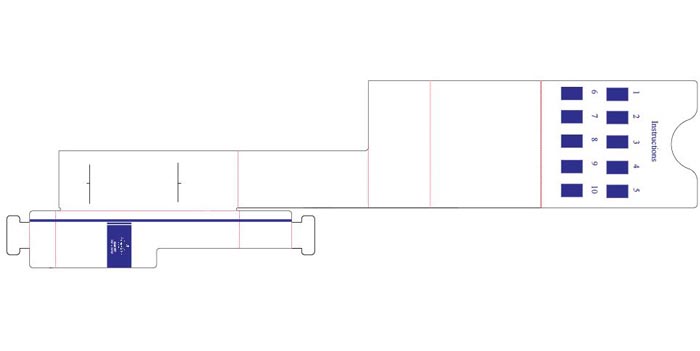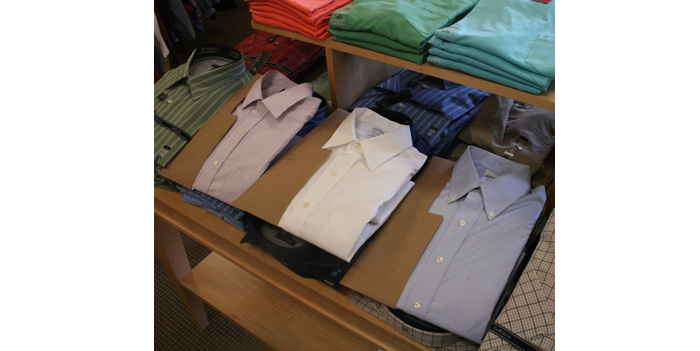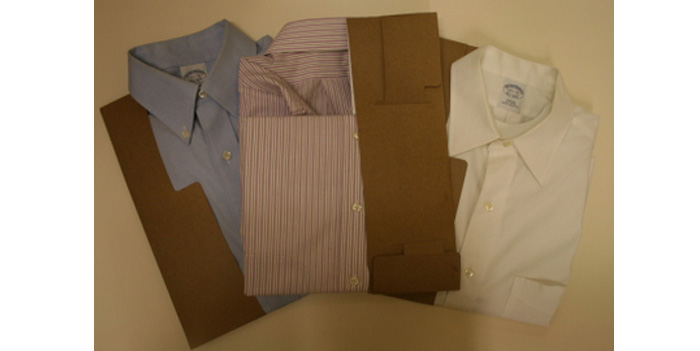Men’s Dress Shirt
Men's Dress Shirt
| School: | University of Wisconsin-Stout |
| Team: | Jordan Hendricks, Becca Eggers, Cody Stanton, |

Dress shirt shopping can be a wildly different experience depending on the retail outlet you decide to visit, but the products are largely packaged the same way. Like pieces to a puzzle, assembling a dress shirt could be considered an art with how much attention to detail is paid to ensure each shirt appears the highest quality on the store floor using a combination of plastic, pins, clips, tissue paper, and paperboard.
Figuring out the proper shirt size can require the consumer undertaking the responsibility of disassembling each shirt pin by pin, dropping them to the fitting room floor to be swept away by the cleaning crew, never to be used again. Although the pins and plastic used to hold the shirt together serve their purpose efficiently, the variety of materials the shirts poses a sustainability issue. The mix of materials used in traditional dress shirt packaging can confuse the user, and what is recyclable, may not end up in the right location.
The wide selection of materials used in assembling a dress shirt varies by the manufacturer but all achieve the same goal of making the product appear the highest quality.
Through an effort to streamline production, maintenance, and supply chain, we have created a solution that allows retail outlets to package their dress shirts using a single material, yet keeping the high quality appearance desired on the store shelf. The design offers a front panel that grabs the consumer’s attention through branding and creating easily distinguishable essential information such as sizing and any desired promotional copy. The materials are 100% recycled paperboard and printed with soy inks.
The design allows shirts to be folded by anyone with clear easy to follow directions printed directly on the piece. Recycling efforts are maximized through reuse or easily replaced getting the most value from the design.
The consumer’s perception of the assembled shirt on the retail shelf is critical for the success of the product. In a seemingly endless rainbow of options, shirts must be the highest quality to remain competitive. The pinned version shows the shirt in its perfect form. The way the shirt appears is no accident, and has become a long standing tradition that consumers expect while shopping. This design offers a way to differentiate through sustainable design and improving an age old tradition.




